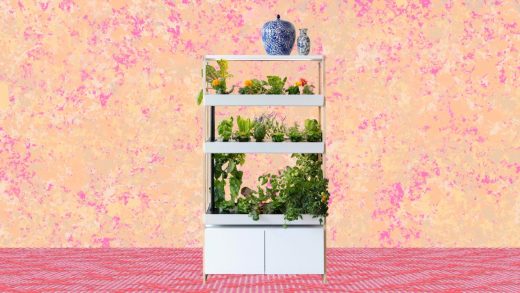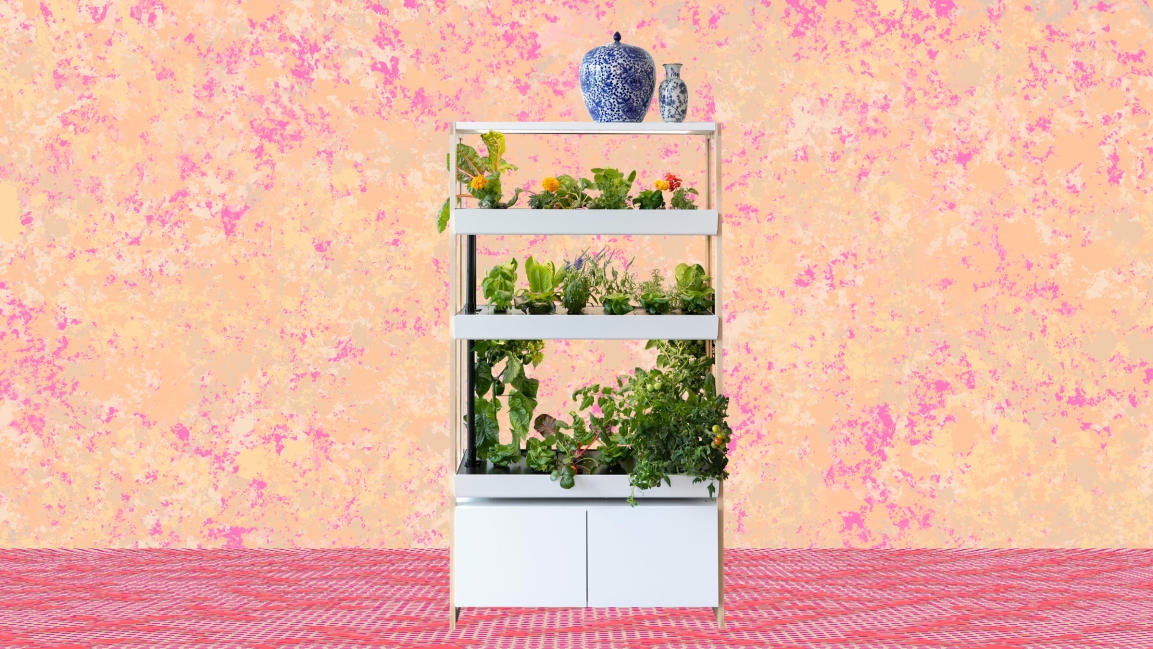This indoor gardening system brought homegrown veggies (and zen) to my New York apartment
Years ago, I spent a summer growing food and living off the grid. That summer taught me so much about the value of gardening that I have kept it up as a hobby for well over a decade. Hobbies are an important way to cultivate joy and self-worth, while perhaps cultivating a little lettuce. These days, I’m more connected than I used to be—even the lights in my home are smart. So, the Rise Garden appealed to me for the way it brought an old pastime into my modern, New York City apartment life.
Rise Gardens are smart, Wi-Fi-connected hydroponic gardens designed for indoor use. I tested the double indoor family unit, an attractive and easy-to-use system about the size of a credenza. All the Rise Garden units (starting at $279) use continuous-flow solution culture, meaning a stream of water is aerated and continuously flows past the roots of the plants to keep them healthy and thriving—no dirt necessary. If it sounds complicated, don’t worry: It’s actually one of the easiest ways to grow plants.
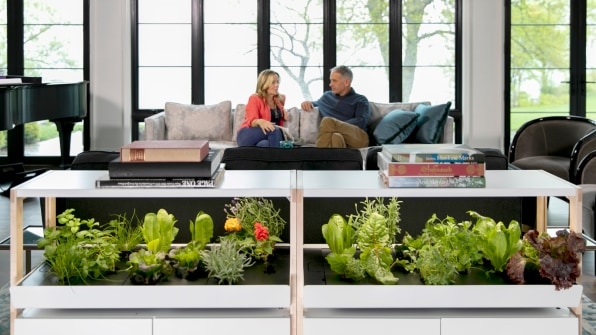
The Rise Garden arrived at my doorstep in pieces in a large box. The hardest part was probably setting up the garden unit itself—it took my husband and me about an hour and a half to assemble. When built, it consists of a bottom cabinet that houses a water pump, tank, and the Wi-Fi system (and can fit storage for some nutrients and seed pods), as well as a tray (or trays, depending on how many levels your unit has) with special slots for each plant (more on that later), and an overhead light that makes sure the plants get their nourishing illumination, rain or shine. The unit was relatively easy, if time-intensive, to put together. The resulting furniture is sturdy but attractive, with a sleek white and light wood design fit for Ikea.
I was very excited to get my garden going and fill all 12 of the available spots in the growing trays. The sprouting process is where things got really fun. When you receive the unit, it comes with 12 starter plants and a little plastic nursery box to get them started in. You simply place your seed “pods” (seeds nestled into an impressively small amount of cup-shaped dirt) into slots in the plastic nursery container with a little bit of water, close the lid, and wait a few days for them to sprout. You can use the app to keep track of where each seed is being placed, and it will provide information about each plant, from sprout to harvest. Through the Rise site, you can peruse a huge variety of seed pods for tons of different plants: from vegetables such as beets, tomatoes, jalapeños, and eggplant to herbs such as mint, basil, and chives to flowers along the lines of lavender, sunflowers, and chamomile.
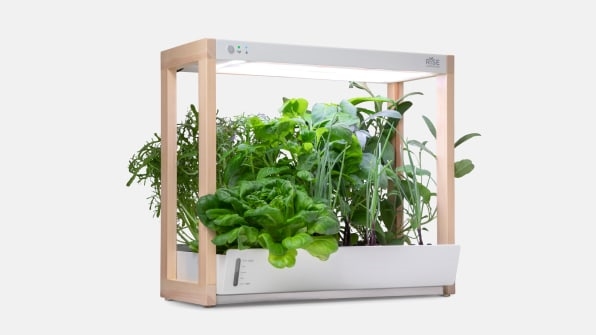
The real power of Rise is in the companion app. While the design can be a little clunky (it’s constantly being updated and improved), the app guides you through the care of the plants from sprout to bloom. No guesswork. I checked the pods—and the app—with childlike delight constantly over the next few days. It’s truly marvelous to see something grow from a speck to two tiny little leaves—sprouts look the same at first. As the plants grew, my app told me when they were ready for the big league—to be moved into the direct light of the Rise unit. Carefully following the app’s instructions (most of the time), I moved the sprouts from the little nursery box to the garden trays as indicated.
Once the sprouts are situated in the big unit, you fill the system with 3-5 gallons of water and set up a sensor that will tell you exactly how to take care of the plants. They will need specific nutrients in order to grow and thrive, and the app sends you push notifications about what kind of care your plants need, and when. I would never have attempted nutrient management without guidance, but the app gives very straightforward instructions, easy enough for children to follow along and help with. Four types of bottled nutrients are used in the system: Sprout, Thrive, PH Balance, and Blossom. Sensors tell you when to use them, as well as when to add water—so even that aspect of growing is easy. Keep in mind that the garden will start requiring more nutrients more frequently as the plants get bigger and start consuming more, so order accordingly.
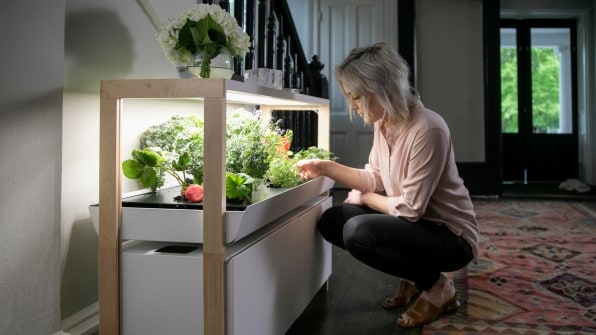
Other than watering and feeding the garden when prompted by the app (about every 4-7 days, in my experience), your plants will require a little TLC once in a while—you’ll need to remove yellowing leaves or prune plants to encourage growth. Other tips for plant care are also in the app. Just click on the plant, and you’ll see how old they are, the stage of development, and when to harvest.
Which leads me to the best part of the Rise Garden experience: eating the fruits (and veggies and herbs) of your labor. Topping your tacos with cilantro you grew, adding fresh basil to a pasta dish, eating fresh lettuce and cherry tomatoes—these delicious, rewarding experiences are worth every minute you spend tending your hydroponic unit. The Rise Garden offers a great opportunity to learn about your food, and it could be a great tool for teaching children about farming, even in a small apartment.
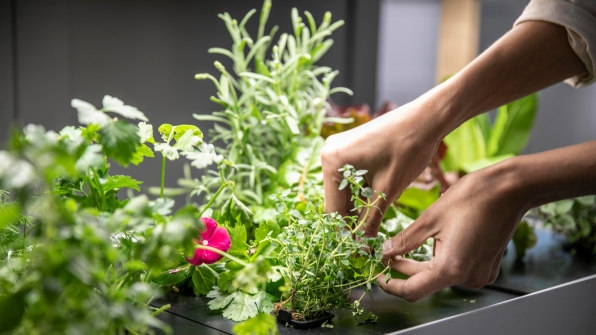
My first growing cycle is now complete, and I’ve learned so much in just a few weeks of having the garden (including that my dog loves cilantro, and it makes her breath fresh). Caring for the garden not only gives me fresh herbs and veggies—it reignited my love for an old hobby and adds a little bit of zen to my days. My garden is in my office and provides soothing fountain noises during my workday. I’d recommend this unit to anyone interested in gardening, especially if you’re living in a smaller space and need a dose of nature in your life. I’ve loved being able to serve and eat food that grew right in my home, and I can’t wait to try the new seeds Rise is constantly adding to its offering. There’s nothing better than reaping the harvest of veggies you grew yourself—and starting anew once you’ve enjoyed them all.
Fast Company may receive revenue for some links to products on our site.
(35)

